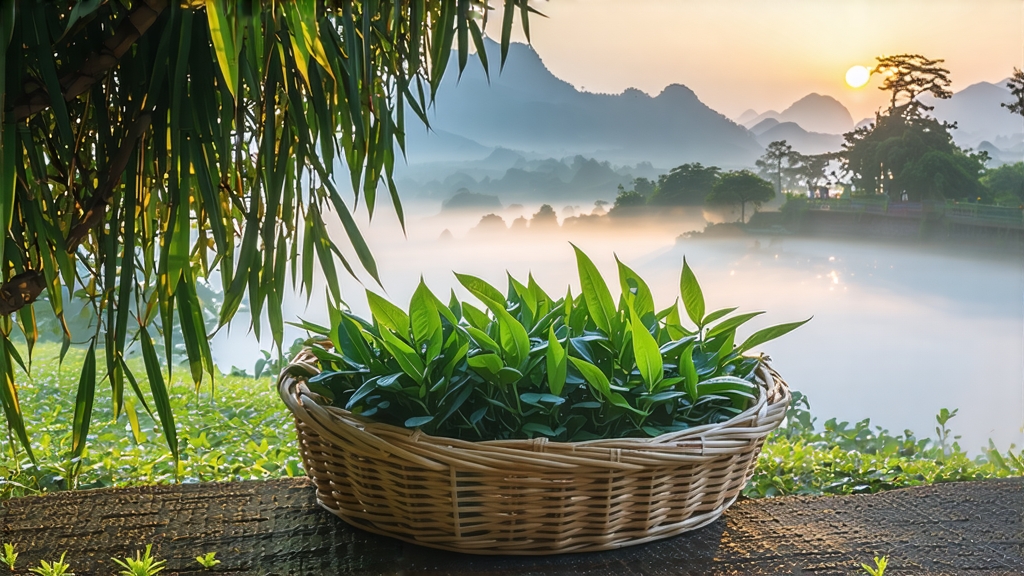
Longjing, literally “Dragon-Well,” is the most celebrated among China’s more than one thousand green-tea styles. Its fame rests not on legend alone but on a convergence of soil, micro-climate, cultivar, and human skill that has been refined for well over a millennium. To understand why a single sip can taste like sweet spring water, roasted chestnuts, and fresh garden peas all at once, one must follow the leaf from Tang-dynasty stone inscriptions to the quiet pre-dawn hours of contemporary Hangzhou, where pickers still climb the same hills that poets once climbed with wine and ink-stones.
Historical roots
The earliest written record appears in Lu Yu’s Classic of Tea (760 CE), which lists “Longlin” among the superior springs surrounding Hangzhou. By the Song dynasty, monks at the nearby Yongfu Temple were already pressing steamed tea into cakes; when the imperial court moved south to escape Jurchen invaders, literati discovered that the nearby hills produced a loose green tea whose fragrance lingered longer than any tribute tea shipped north. The Kangxi Emperor (r. 1661-1722) is credited with elevating Longjing to imperial tribute status after curing his grandmother’s heatstroke with an infusion he carried from Hangzhou. Qianlong’s six southern tours further sealed the myth: the emperor allegedly plucked eighteen bushes in front of Hugong Temple, plants that still survive today behind a low fence and are auctioned annually for more than the price of gold per gram.
Terroir and cultivar
Authentic West Lake Longjing may legally be produced only within a 168 km² polygon drawn around Hangzhou’s western hills. The micro-climate is dominated by the lake’s thermal mass, which moderates temperature and traps morning mist. Granitic soils drain quickly yet retain just enough moisture; their slightly acidic pH (5.0–5.5) encourages slow amino-acid accumulation, translating into sweetness. The traditional cultivar is Qunti, an open-pollinated landrace with small, thick leaves that tolerate high pan temperatures. In the 1980s the clonal Longjing #43 was released for earlier budding and higher yield; purists claim it lacks the lingering aftertaste of Qunti, yet it now accounts for 70 % of certified production. A third cultivar, Zhongcha 108, adds floral top-notes but requires even stricter temperature control during firing.
Micro-regions within West Lake
Connoisseurs speak of five core sub-zones. Shifeng (Lion Peak) yields the most complex cup: orchid aroma, broad bean sweetness, and a mineral finish reminiscent of wet slate. Meijiawu, a narrow valley once inhabited by tea-farming Hui merchants, produces a greener, more vegetal profile with a pronounced soybean skin note. Wengjiashan gives a lighter, bamboo-leaf character; Longjing Village itself offers balance; Yunqi supplies a slightly smoky edge from surrounding pine forests. Beyond these lie the broader Qiantang and Yuezhou counties, whose teas may legally carry the Longjing name but rarely achieve the same aromatic depth.
Harvest calendar
The picking window is brutally short. First-grade Mingqian (before Qingming, 4–5 April) leaf consists of one bud plus the unfolded first leaf, barely 2.5 cm long. Each kilo of finished tea requires between 60 000 and 70 000 such shoots, all plucked within ten days. Yuqian (before Grain Rain, 20 April) leaf is one bud plus two leaves, still tender but already less sweet. After May the temperature rises, polyphenols increase, amino acids drop, and the tea is relegated to restaurant grade. Experienced pickers work from 5 a.m. to 9 a.m., when dew keeps the leaf supple; after that the sun wilts the edges and complicates the kill-green stage.
Hand-making: the ten motions
Although machine models now mimic the gestures, the highest grades are still shaped entirely by hand in an iron wok heated to 80–100 °C. The master’s palm senses the leaf temperature and adjusts the fire within seconds. The sequence—grab, press, shake, fling, roll, buckle, fling again—lasts twenty-five minutes and reduces 250 g of fresh leaf to 50 g of dry. The goal is to drive moisture down to 6 % while locking in the flat, sword-like shape that allows the leaf to stand upright when dropped into